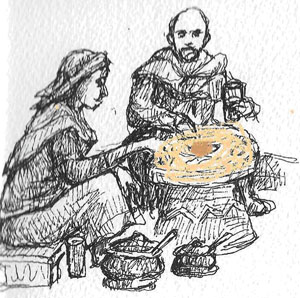7.1 Important principles in food hygiene and safety
In previous sessions of this Module, you have been introduced to the concept of hygiene, which was defined as the set of practices associated with the preservation of health. One important aspect of this is food hygiene, which refers to the many practices needed to safeguard the quality of food from production to consumption. This is sometimes referred to as ‘from farm to fork’ or ‘from farm to table’, because it includes every stage in the process from growing on the farm, through storage and distribution, to finally eating the food. It also includes the collection and disposal of food wastes. Throughout this chain of events there are many points where, directly or indirectly, knowingly or unknowingly, unwanted chemicals and microorganisms may contaminate the food.
The term ‘food hygiene’ refers particularly to the practices that prevent microbial contamination of food at all points along the chain from farm to table. Food safety is a closely related but broader concept that means food is free from all possible contaminants and hazards. In practice both terms may be used interchangeably.
Food hygiene is vital for creating and maintaining hygienic and healthy conditions for the production and consumption of the food that we eat.
A traditional way of eating food at the household level in Ethiopia, injera with wot (sauce), is shown in Figure 7.1. Usually this type of meal is safe because it is food that is prepared to eat immediately.

The overall purpose of food hygiene is to prepare and provide safe food and consequently contribute to a healthy and productive society.
Within this overall aim, the specific objectives for food hygiene are to:
- Prevent food spoilage, i.e. changes that make food unfit for consumption due to microbial or chemical contamination.
- Inform and educate people about simple and practical methods of keeping food safe to protect themselves against foodborne diseases.
- Protect food from adulteration (intentional contamination).
- Ensure proper practice in the food trade to prevent the sale of food that is offensive or defective in value and quality.
Learning Outcomes for Study Session 7
